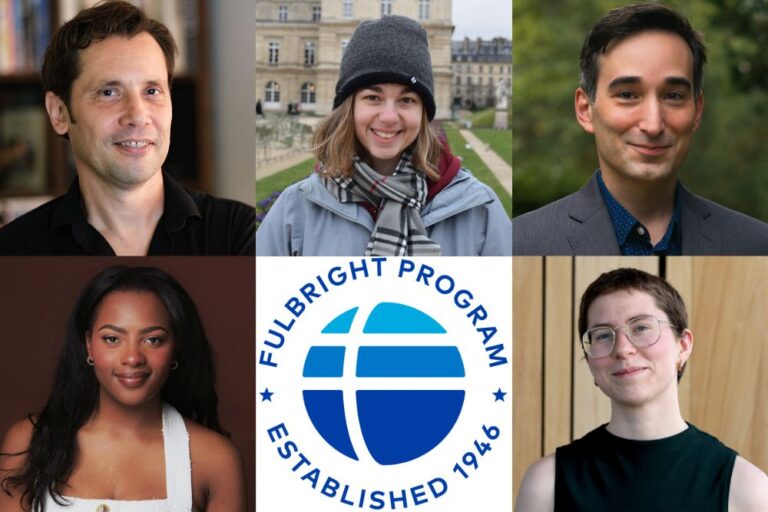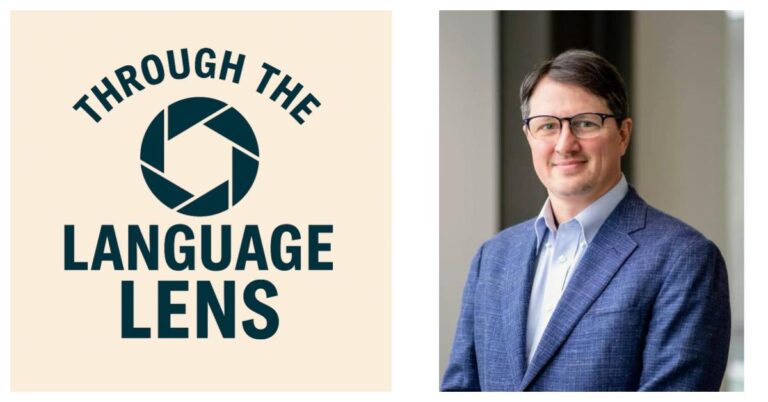Michigan State University is an institution that strives for diversity and inclusion both at home and abroad.
With the help of the MSU Resource Center for Persons with Disabilities and an MSU Creating Inclusive Excellence Grant, one recent MSU graduate was able to contribute to these efforts by designing an improved method of teaching English to students with visual impairments. A recent MA in Teaching English to Speakers of Other Languages (TESOL) graduate and Columbian Fulbright scholar, Maritza Medina G. faced difficulties as a blind student when learning phonetics. She received a Tinker Field Research Grant from the MSU Center for Latin American and Caribbean Studies and wanted to conduct her thesis research on phonetics through assistive technology’s universal design.
Phonetics is a branch of linguistics that studies how humans make and perceive sounds, however aspects of printed phonetics were not accessible for people who are blind or visually impaired. Maritza wanted to be a part of the solution to fix that.
“As a teacher I saw that there were many problems,” says Maritza. “When I decided to go to Michigan State, I wanted to make something for my community. It was my principal purpose. And why phonetics? Because symbols were completely inaccessible for blind people, especially due to screen readers. Usually, they don’t read the symbols, and it’s very hard, causing a disadvantage. People who can see just open a dictionary and see the symbols. It’s very, very easy. But for us, it’s almost impossible. I said, ‘Okay, phonetics is important.’”
While working in the Mason School District, Maritza realized how impactful phonetics could be to people with visual disabilities living in her home country of Columbia. She wanted to improve on the established tactics of teaching phonetics.
“Maritza was a Fulbright scholar in our MA TESOL program,” said Debra Hardison, Associate Professor for TESOL and Second Language Studies, in the MSU Department of Linguistics & Languages. “New students take a course LLT 822 Interlanguage Analysis. I co-teach this course, and in my half, we look at applied phonetics and phonology. Maritza was already interested in phonetics and its role in language learning and teaching. She showed me a piece of card stock on which her sister had drawn a phonetic symbol using silicone to provide a raised image. I was impressed by the card and thought I could make something similar for each of the various symbols involved in my course. So, we were inspired to come up with something that would allow the user to collaborate with other sighted and non-sighted persons in a learning context.”
Thus, the idea of 3D printed phonetic IPA cards was born.

In the early stages of the project, Debra researched relevant tools that were available, and came across an article reference published by linguist Lillehaugen and colleagues at Haverford College in Pennsylvania. After discovering their design of Tactile International Phonetic Alphabet (IPA) Magnet-board System through the Interlibrary Loan, she found that this system was created for the teaching of phonetics and phonology, consisting of small pieces of thermal paper with an individual symbol. After having Maritza review this discovery, she suggested several modifications which were later incorporated into their own design of an International Phonetic Association (IPA) symbol project. With her Braille skills and teaching experience, Maritza was able to pronounce the information needed on each card.
“She felt strongly about creating an object that was easy to manipulate and would provide as much information as possible, including a way to refer the user to more information about each symbol on the companion website,” says Debra, who became the principal investigator (PI) on this project, which was supported by the MSU Creating Inclusive Excellence Grant and the help of Stephen Blosser, RCPD Ability Access Specialist.
On the corresponding website, users can obtain more information to better identity the desired symbol, which the audio recordings provide. In gaining this access, students can explore how to produce said symbols and place the point of articulation. This will help improve the production and comprehension of phonetics in American English. The idea behind the IPA cards is to provide students with their sense of touch to recognize and reference the shape of the symbol. Together, the use of the cards and the website would contribute to the learning of English sounds by second-language speakers of English (native speakers of Spanish)
The grant was able to support the funding of staff and materials to create the IPA cards, and allowed Maritza and Debra the opportunity to participate in the 2019 Accessible Learning Conference held at MSU. Having printed the initial version of the cards on thermal paper, they decided to create a more durable tool. They worked with Stephen Blosser and the RCPD to print the IPA cards on the RCPD’s 3D printer, with each of the components on the card presented in braille. This made them useful for both sighted and non-sighted persons, allowing them to work together in a truly inclusive learning environment.
IPA cards include an IPA symbol, which is a typographical description, and a reference number that corresponds to the accessible companion website where both visual and auditory information on English consonants and vowels are available. The use of IPA symbols is important for the inclusive learning of languages and phonetics, as each symbol has a unique association with a sound, unlike standard orthography.

“I think that we need to spread this idea to have more communication with other people that can contribute in different ways,” says Maritza. “This material was tested by 22 blind people in Columbia, and the results were very good. But obviously, there are things we will have to improve. It would be nice to have more people giving suggestions. It’s nice to listen to other opinions.”
Now that the process of 3D printing the full set of ADEPT IPA cards is complete, Maritza continues to pay close attention to the needs of blind students. In Columbia, she is further working toward minimizing less effective tactics to teach phonetics. Maritza, who is delighted to share the success of her project in her home country, states: “I am interested in increasing the idea of phonological awareness in the teaching of English. When you are Spanish speaking, in terms of phonetics, the pronunciation is one of the most difficult aspects in linguistics to get. Many people can write and read, and teachers usually teach grammar, but oral skills are the most complex. For now, it’s hard because of the pandemic, but I am interested in making classes online to train and incorporate this material.”
Interested in learning more about IPA Cards? Be sure to watch this interview below.


